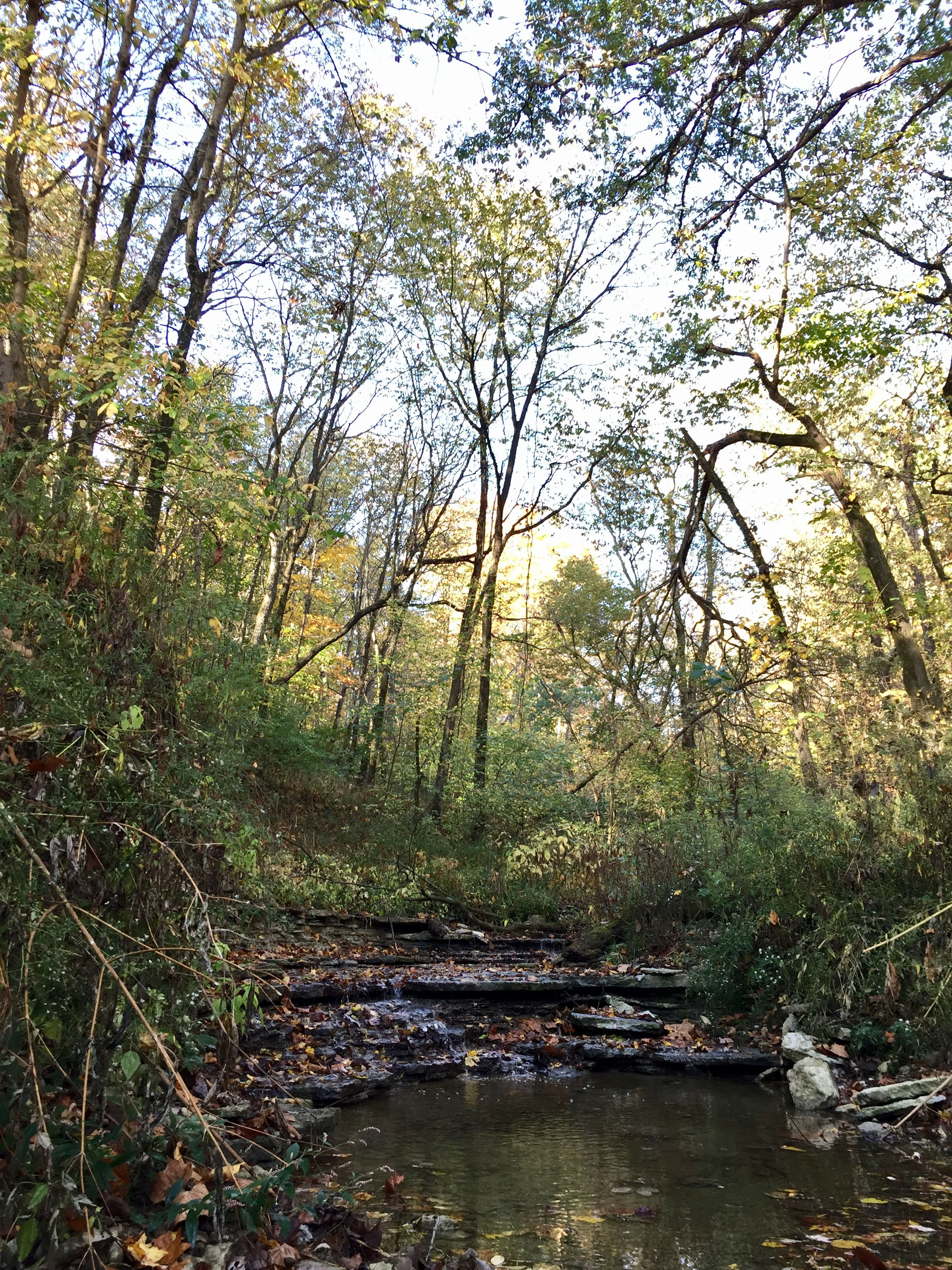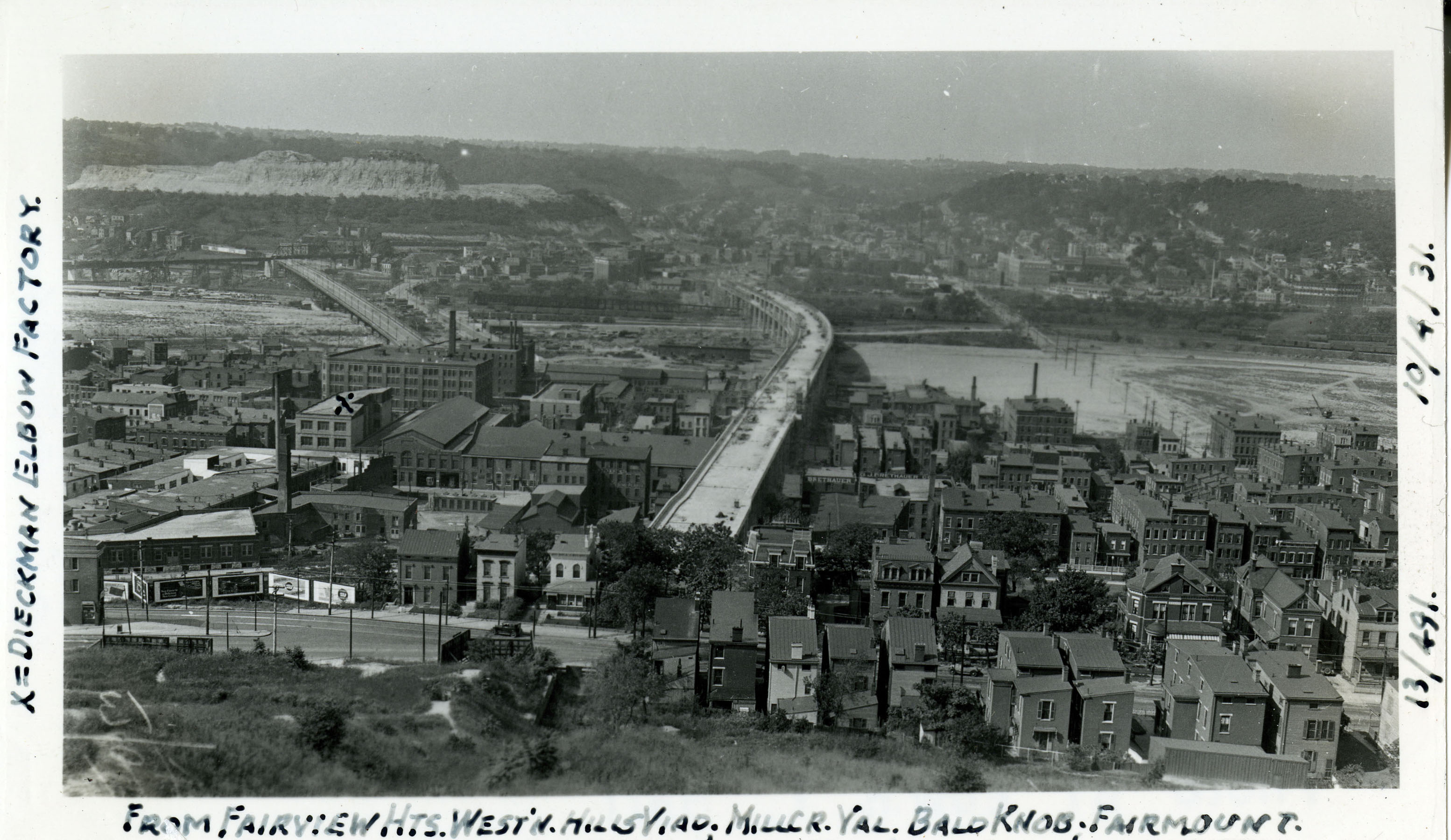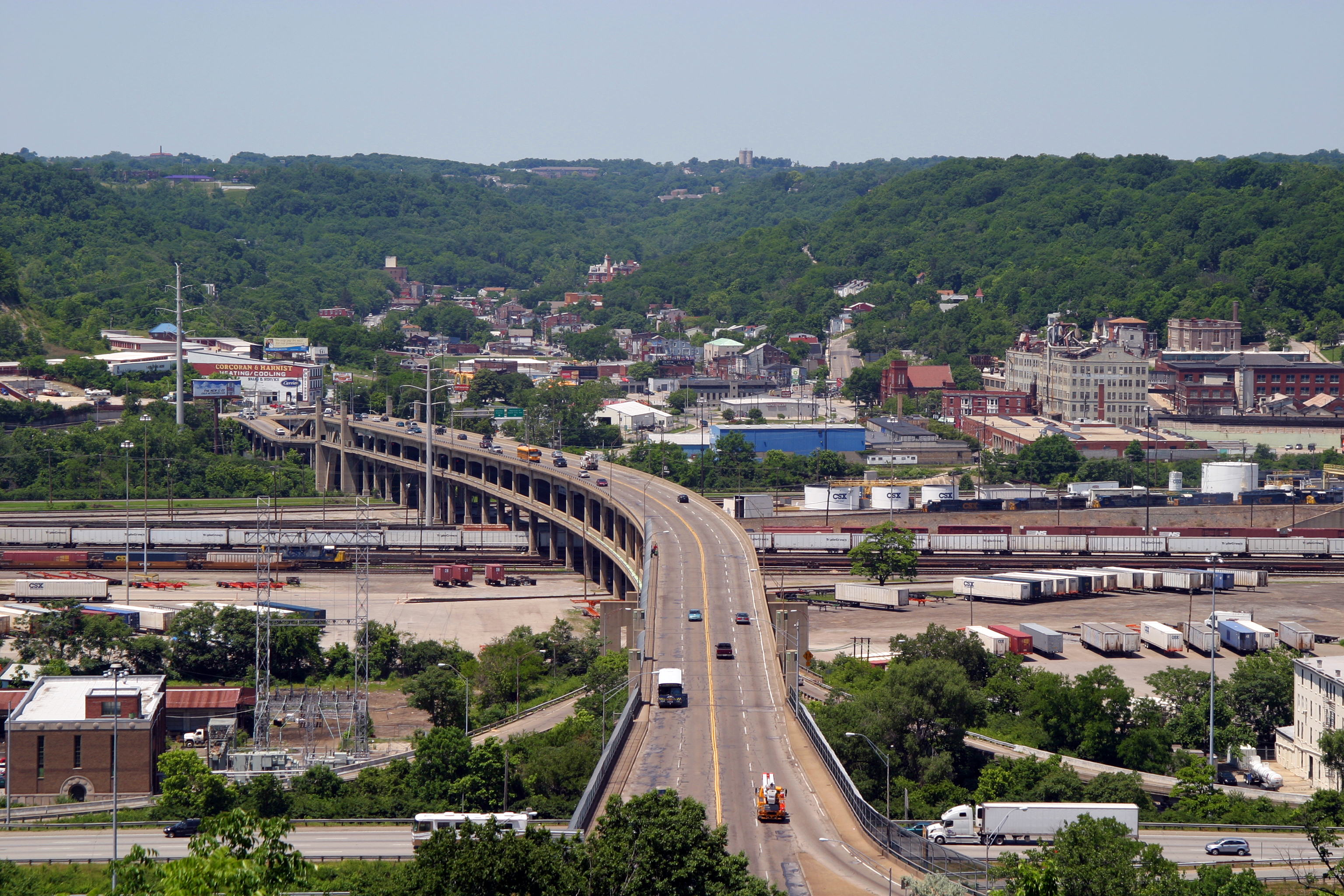Trail Location 15: Evolution of the Lick Run Corridor

Walking Tour? VIEW THE TRAIL LOCATION IN GOOGLE MAPS >
EVOLUTION OF THE LICK RUN CORRIDOR
Before South Fairmount was settled by people, the Lick Run stream flowed naturally through forested hillsides and a valley. This environment naturally absorbed, slowed down, and cleaned the rainwater on its way to the Mill Creek.

As development progressed during the late 19th century, Lick Run evolved from a natural stream bed to a channelized ditch. It was then enclosed in a 20-foot-diameter underground combined sewer that carried both sewage and rainwater. The stream was soon forgotten as roads and buildings were built over the top.
Over time, however, a new challenge arose. The Lick Run sewer began filling up with too much water during rainstorms and overflowing into the Mill Creek. This is known as a combined sewer overflow or CSO. By the early 21st century, millions of gallons of sewage and rainwater were overflowing into the Mill Creek each year.
The Lick Run Greenway not only reduces the overflows but restores the historical connection between rainwater and the Mill Creek. It's our generation's Lick Run.
The Lick Run Project removes about half a billion gallons a year of rainwater (aka stormwater) from the combined sewer system and carries or conveys it to the Mill Creek through the Lick Run Greenway (just like the original Lick Run stream used to do). The rainwater is collected by a combination of green infrastructure (e.g., bioswale and stream restorations) and dedicated underground storm sewers beneath most of the main streets in South Fairmount and the surrounding area.
Keeping stormwater out of the combined sewer system results in a significant reduction in CSOs into the Mill Creek each year and also reduces the amount of wastewater treated at the Mill Creek treatment plant.

